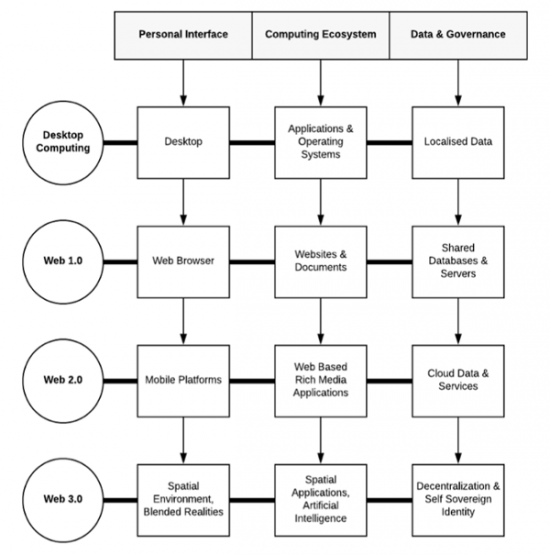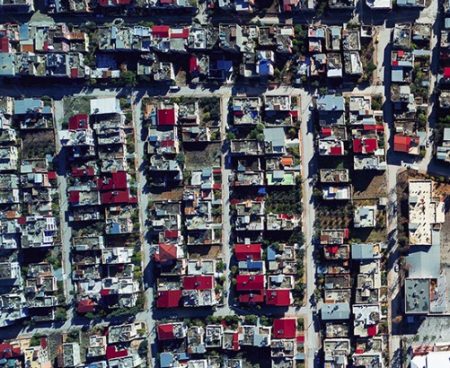November 11, 2018 – It is Remembrance Day here in Canada, commemorating the 100th anniversary of the armistice that ended World War I. The news of the armistice signing back then traveled over telephones and wired cables. The last shot fired just before 11:00 a.m. on the 11th day of the 11th month killed a young Canadian soldier one second before the guns fell silent. The bullet came from a German sniper shooting across no man’s land on the Belgium frontier. Today in the age of the Internet and instant communication I wonder if that German soldier would have fired knowing that the end to the violence was imminent because he would have read it on his smartphone, or seen it on some other portable electronic device. Today almost shot fired is heard around the world within seconds because the superimposed digital world has permanently altered our sense of time and made us cognizant of not just our own present but that of millions around the planet.
The World Wide Web of Tim Berners-Lee and the Internet, the electronic digital pathway that connects nearly half of us on the planet is truly mind-altering and yet it remains in its infancy, a mere 30 years young. But Peter Diamandis in his latest email blast describes just how much different the Web experience will be in a mere five years from now. He calls it the Spatial Web and it is about to transform every aspect of our lives. Read on to learn more.
For all human history, looking at the world through our eyes was the same experience for everyone. Beyond the bounds of an over-active imagination, what you see is the same as what I see. But all of this is about to change. This magical future ahead is called the Spatial Web.
Massive change is underway as a result of a series of converging technologies from 5G global networks and ubiquitous artificial intelligence, to 30+ billion connected devices (known as the Internet of Things or IoT), each of which will generate scores of real-world data every second, everywhere. The current A.I. explosion will make everything smart, autonomous, and self-programming. Blockchain and cloud-enabled services will support a secure data layer, putting data back in the hands of users and allowing us to build complex rule-based infrastructure in tomorrow’s virtual worlds. And with the rise of online-merge-offline (OMO) environments, two-dimensional screens will no longer serve as our exclusive portal to the World Wide Web. Instead, Virtual and Augmented Reality eyewear will allow us to interface with a digitally mapped world, richly layered with visual data.
Welcome to the Spatial Web. What is it?
While we humans exist in three dimensions, our web today is flat. It was designed for shared information, absorbed through a flat screen. But as proliferating sensors, ubiquitous AI and interconnected networks blur the lines between our physical and online worlds, we need a spatial web to help us digitally map a three-dimensional world.
In the late 1980s, the World Wide Web arrived providing static web pages, and a monumental system of published, linked information unlike any unified data system before it. The evolution to Web 2.0 came about as our connections got faster, and the digital technology and software enriched user interaction. This phase of Web development connected our planet more in one decade than all past empires. Today’s Web grants democratized participation through interactive sites and applications. It is turbocharged information-sharing and has created ripple effects in scientific discovery, economic growth and technological progress on an unprecedented scale. It has seen an explosion of social networking sites, wikis, and online collaboration platforms. Consumers have become creators. Physically isolated users have been handed a global microphone. And entrepreneurs now access billions of potential customers.
But if Web 2.0 took the world by storm, the Spatial Web emerging today will leave it in the dust. While there’s no clear consensus about its definition, the Spatial Web refers to a computing environment that exists in three-dimensional space, a twinning of real and virtual realities, enabled via billions of connected devices, and accessed through the interface of Virtual and Augmented Reality. The Spatial Web will enable us to both build a twin of our physical reality in a virtual realm and bring the digital world into our real one.
It’s the next era of web-like technologies that will include:
- Spatial computing technologies, like augmented and virtual reality;
- Physical computing technologies, like IoT and robotic sensors;
- And decentralized computing: both blockchain, to enable greater security and data authentication, and edge computing, to push computing power to where it’s most needed, speeding everything up.
Geared with natural language search, data mining, machine learning, and AI agents, the Spatial Web will be a growing expanse of services and information, navigable with the use of ever more sophisticated AI assistants and revolutionary new interfaces. Wearables, smart glasses, AR/VR interfaces and IoT will seamlessly integrate the Spatial Web with our physical environment, overlaying every conversation, every road, every object, conference room and classroom providing intuitively presented data and AI-aided interaction.
In the Spatial Web in the not-too-distant future, every physical element of every building in the world will be fully digitized, existing as virtual incarnations and virtual work or meeting places. The digitization of life will mean that every piece of information becomes spatial. Every environment can be smarter by virtue of AI, and every data point about you and your assets, both virtual and physical, will be stored securely, enhanced and monetized. The Spatial Web, in essence, will be a digitally enhanced version of our world with builds to entirely fictional virtual worlds where we can run simulations, support entire economies and even give birth to new political systems.
So How Will It Work?

The above stack diagram gives a good summary picture of the evolution of our digital computing world. The first PCs were standalone systems that operated with installed programs. Interaction was largely human-to-machine, in isolation with input through a keyboard and output to a digital storage medium (a floppy disk) or to a printer. The development of local area networks (LANs) allowed islands of shared data between PCs. Data migrated to computers designated as file servers. The arrival of the World Wide Web had the presentation of data migrating once again to Web servers which connected via service providers to the Internet. The arrival of Cloud computing where data no longer has to reside on local PCs or servers is where we are today. Our interfaces are no longer limited by keyboards. We can interact through Google Assist, Siri, or Alexa. Our smartphones can recognize who we are by reading our facial characteristics. More of us interact with the Web through portable devices than PC screens. We interact with the Web through apps. We can enter virtual worlds, or view snapshots of augmented reality through our smartphone devices. Today we extend our sight by seeing through IoT-empowered sensors.
The Spatial Web will take us many steps further. Our personal AI will act as an intermediary, accessing public or privately authorized data through the blockchain on our behalf, and then feed it back to us through an interface layer composed of everything from a VR headset, to numerous other wearables, or to a smart environment of IoT-connected devices or robots.
What Tools Are Needed?
For the Spatial Web to work it will need a set of basic standards with addresses for people, places and things. Just like the web today relies on the Internet Protocol (TCP/IP) and other infrastructure, by which a computer is addressed and data packets are transferred, we will need an infrastructure for the Spatial Web. Companies are already working on building the infrastructure attempting to evolve today’s web model of text-based web pages in 2D to three-dimensional AR and VR web experiences located in both digitally mapped physical worlds and newly created virtual ones. With a spatial programming language analogous to HTML, the language of today’s Web page construction, we will be able to build a linkable address for any physical or virtual space, granting it a format that then will make it interchangeable and interoperable with all other spaces. And as soon as we populate a virtual room with content, we will then need to encode who can see it, who can buy from it, and who has privileges to alter it.
The Spatial Web’s governing system (for posting content on a centralized grid) will allow users to address everything from the room we are sitting in, to the chair on the other side of the table, and to the building across the street. And just as we have a DNS for the web and the purchase of web domains, once we give addresses to spaces (akin to granting URLs), we then will have the ability to identify and visit addressable locations, physical objects, individuals or pieces of digital content in cyberspace. This will apply to everything in the real world as well as in the virtual worlds we create. As new mapping technologies emerge, we will be able to map rooms, objects, and large-scale environments in virtual space with increasing accuracy. We might then dictate who gets to move our coffee mug in our virtual conference room, or when a team gets to use the room itself. Rules and permissions will be set in the grid, decentralized governance systems or in the application layer. And taken one step further, imagine monetizing these virtual smart spaces and smart assets which we may pay for with secure digital currency.
Why Is It Happening Now?
While countless entrepreneurs have already started working on the tools that will make the Spatial Web a reality. These include:
- The evolution of wireless VR/AR headsets – The International Data Corporation (IDC) predicts the VR and AR headset market is expected to exceed 81 million units per year shipped in 2021, with revenues reaching $170 billion by 2022. Already in the next 18 months, two billion devices will be enabled with AR. And tech giants across the board have long begun investing heavy sums. Early next year, HTC will release the VIVE Focus, a wireless self-contained VR headset. At the same time, Facebook is charging ahead with its Project Santa Cruz — the Oculus next-generation standalone, wireless VR headset. And Magic Leap has finally rolled out its long-awaited mixed reality headset.
- Mass deployment of 5G networks – Connection speeds of between 10 and 100 gigabits per second are contemplated in the next 6 years which will match the progress being made in the hardware with the need for speed as a requirement for virtual worlds to work. As connectivity speeds converge with advances in graphic processing technology (GPUs), we will experience seamless VR and AR interfaces making ever-expanding virtual worlds commonplace. Users will have the tools to do rapid development in VR.
- Converging technologies using blockchain technology and machine learning – To build a world of decentralized apps (or dApps) will require a decentralized Web and demand for user-controlled data. Blockchain technology will remove central points of control from the Spatial Web. Anyone will be capable of creating an address and independently interacting in this new iteration of the Web. Enabled by a permission-less blockchain, any user, regardless of location, gender, ethnicity, wealth, or citizenship, will be able to establish digital assets and transfer them seamlessly, granting users a more democratized Internet. Data will be similarly decentrally stored on distributed nodes which will mean no single point of failure. Users will be able to create multiple backups, accessible only through digital authorization, and leaving them immune from any single server failure.









